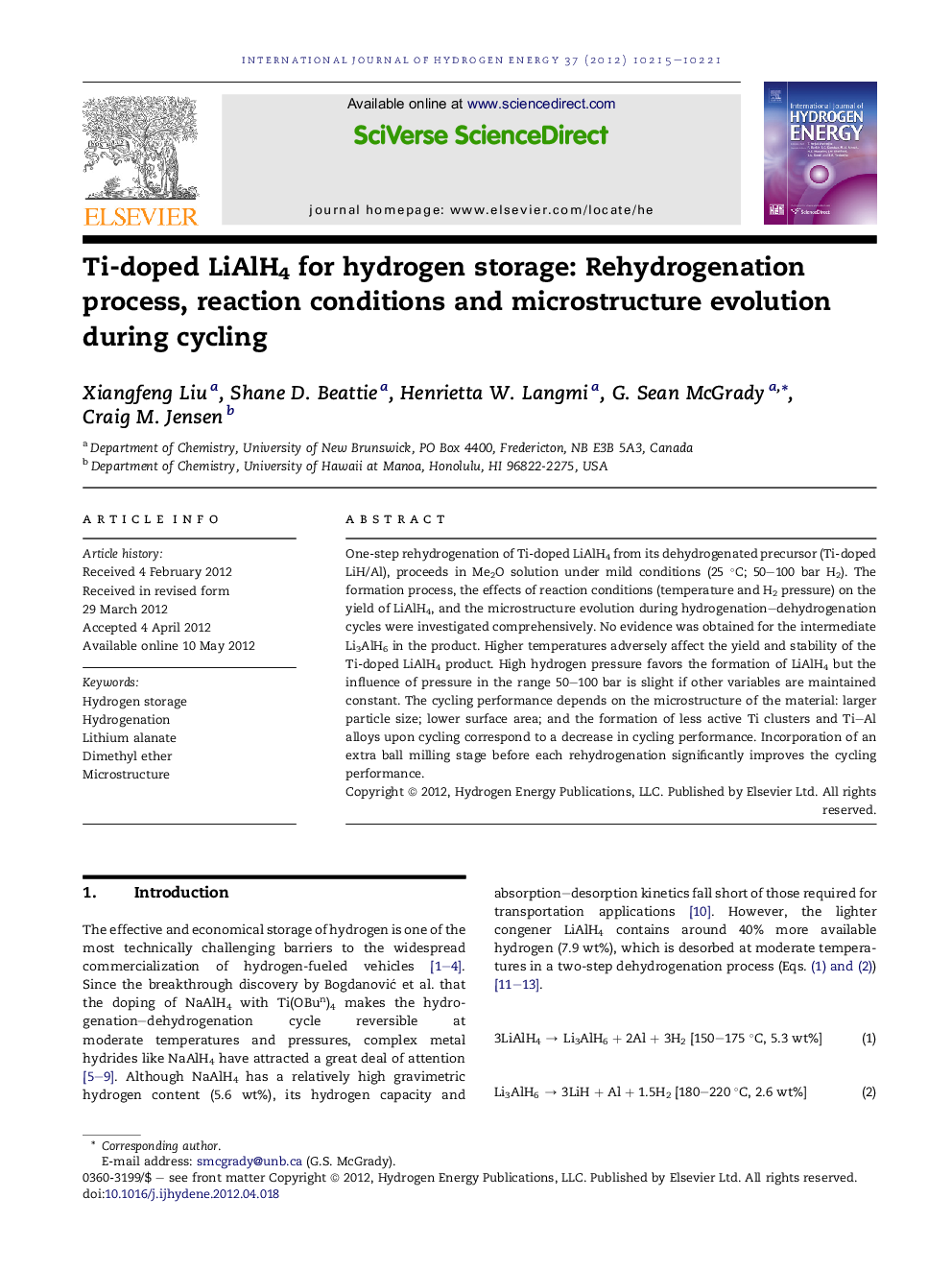| Article ID | Journal | Published Year | Pages | File Type |
|---|---|---|---|---|
| 1275208 | International Journal of Hydrogen Energy | 2012 | 7 Pages |
One-step rehydrogenation of Ti-doped LiAlH4 from its dehydrogenated precursor (Ti-doped LiH/Al), proceeds in Me2O solution under mild conditions (25 °C; 50–100 bar H2). The formation process, the effects of reaction conditions (temperature and H2 pressure) on the yield of LiAlH4, and the microstructure evolution during hydrogenation–dehydrogenation cycles were investigated comprehensively. No evidence was obtained for the intermediate Li3AlH6 in the product. Higher temperatures adversely affect the yield and stability of the Ti-doped LiAlH4 product. High hydrogen pressure favors the formation of LiAlH4 but the influence of pressure in the range 50–100 bar is slight if other variables are maintained constant. The cycling performance depends on the microstructure of the material: larger particle size; lower surface area; and the formation of less active Ti clusters and Ti–Al alloys upon cycling correspond to a decrease in cycling performance. Incorporation of an extra ball milling stage before each rehydrogenation significantly improves the cycling performance.
► Ti-doped LiH/Al hydrogenates directly to Ti-doped LiAlH4 in Me2O. ► Larger particle size, lower surface area, and Ti–Al alloy phases decrease cycling performance. ► Ball milling between hydrogenations significantly improves cycling performance.
